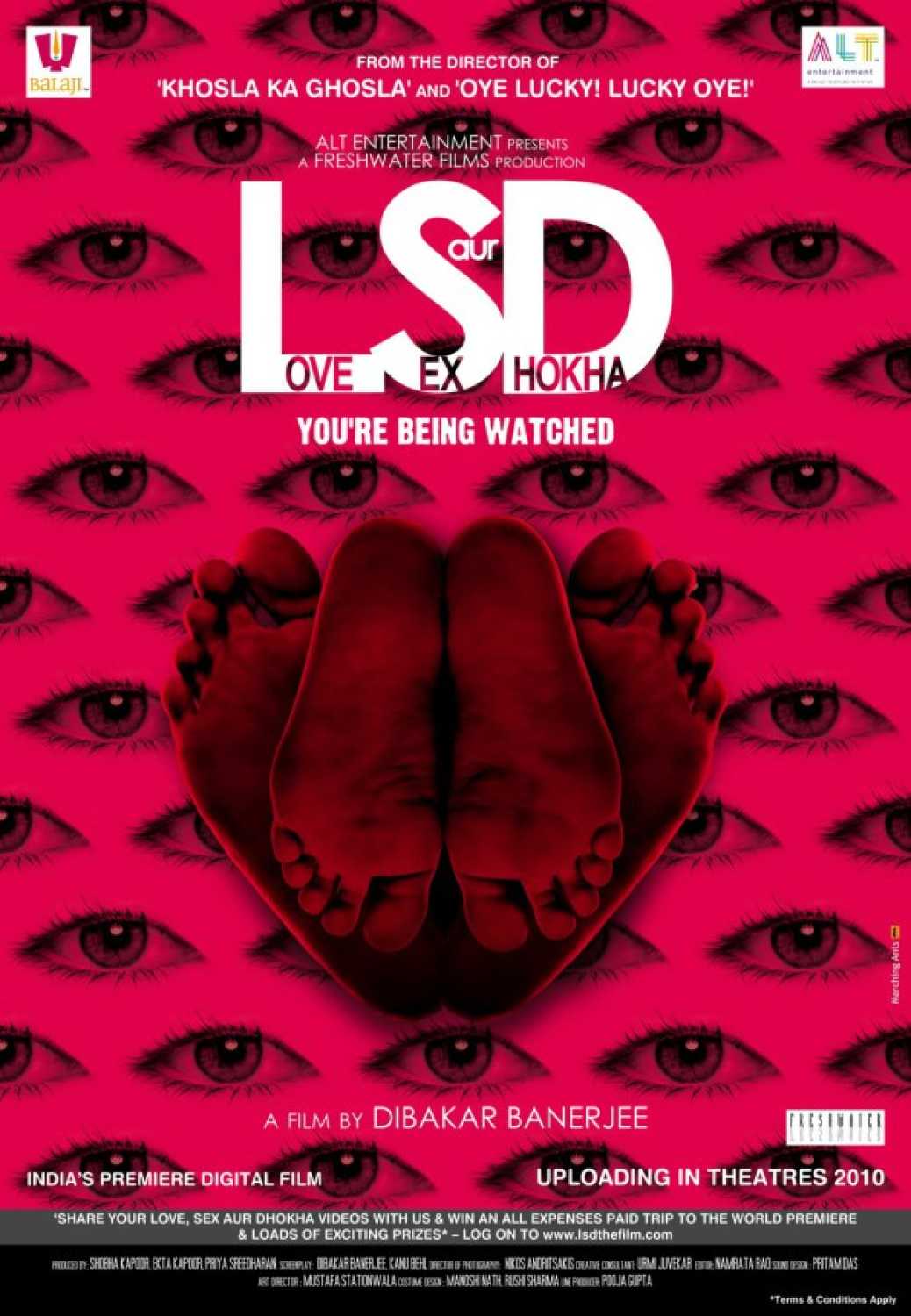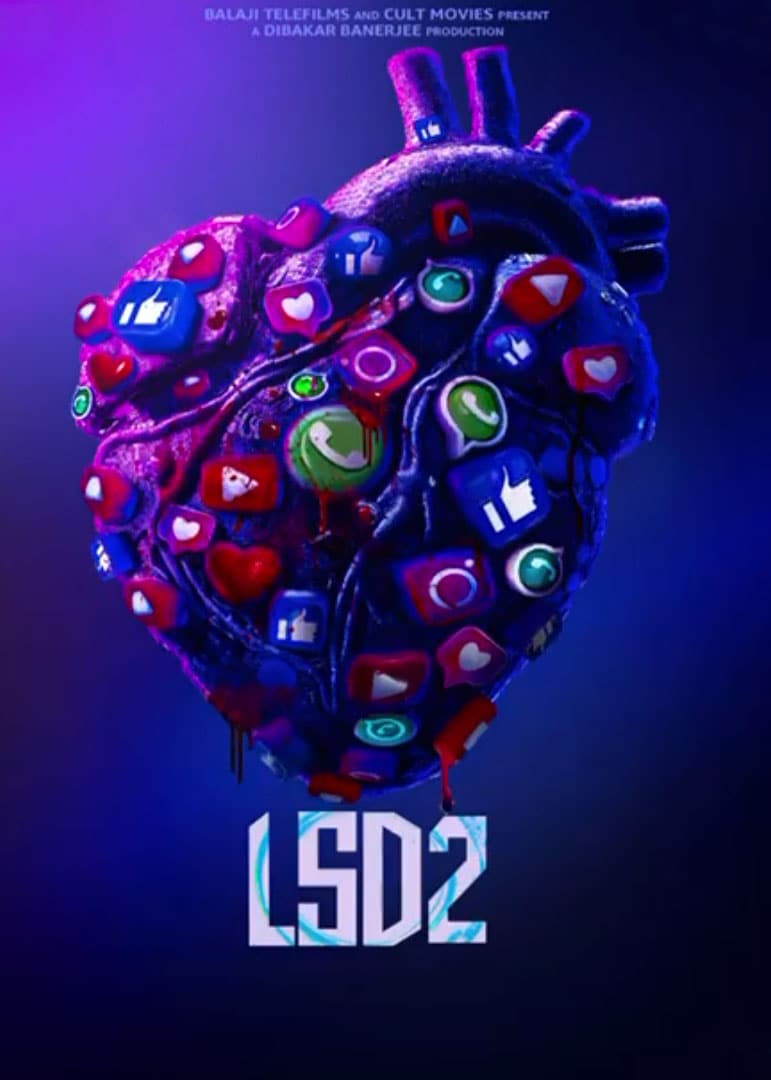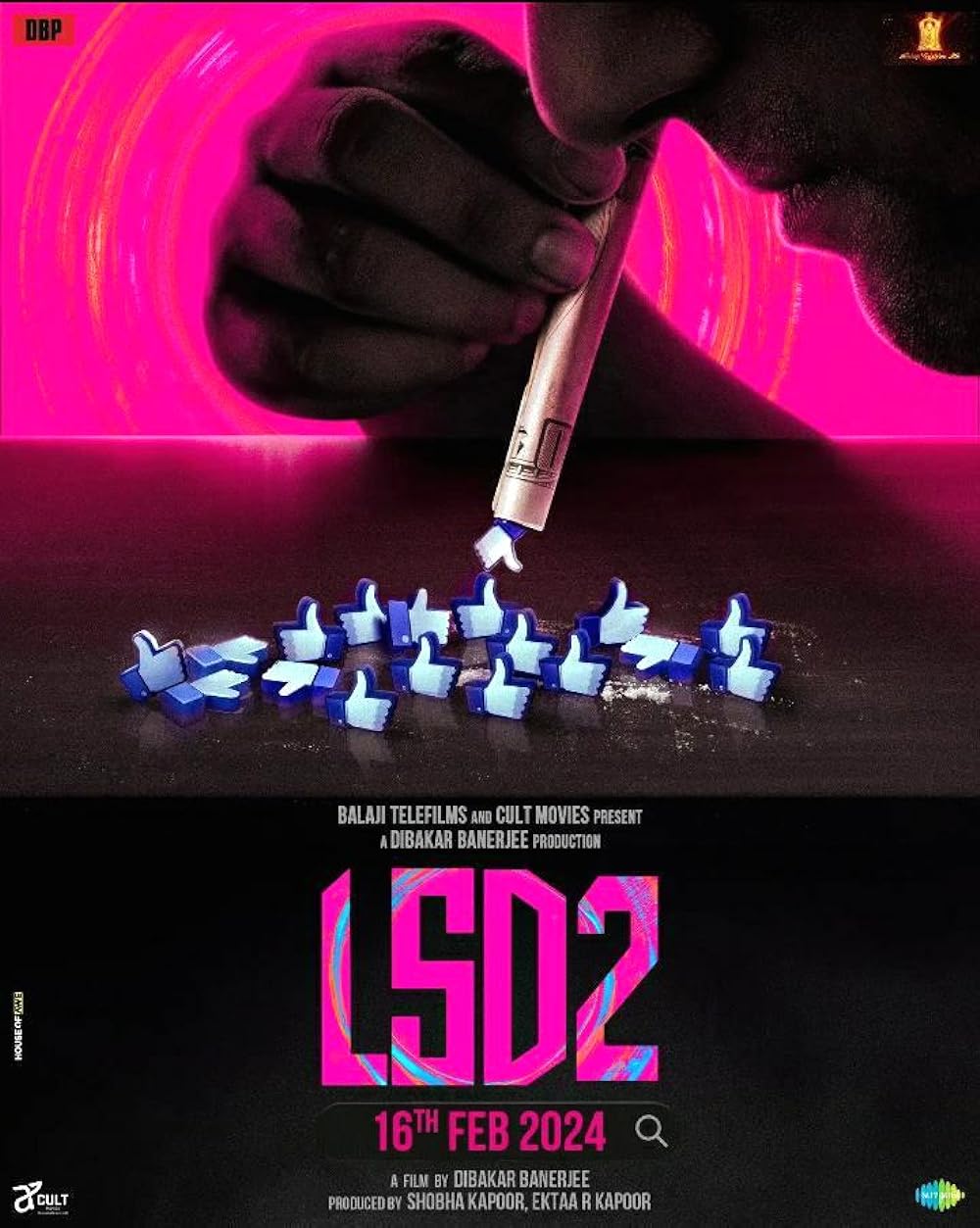Rarely are there films with such audacious spirit that they look, at each one sitting in the audience, incisively in the eye, making them feel uncomfortably and distressingly culpable. So instead, a viewer might try to escape the soul-wrenching bleak skepticism by taking out their phones and visiting their social media, only to find that they can’t scroll past the questionable nature of it all anymore – the nature whose landscape is explored with dark satire by Dibakar Banerjee in this latest film LSD 2.
LSD 2 is an anthology consisting of three inter-linked stories that explore the lives of its characters in a post-truth internet world which is always on the lookout for alarming incidents, breaking news andfascinating “truth”.
LSD 2 is an anthology consisting of three inter-linked stories that explore the lives of its characters in a post-truth internet world which is always on the lookout for alarming incidents, breaking news and fascinating “truth”. One of the film’s characters in a scene says – ‘What a truth!’ The intentional humour of the film is crafted sardonically to evoke repulsiveness in the audiences.
A spiritual sequel to Love, Sex Aur Dhokha
Love, Sex aur Dhokha was released in 2010 and it was appreciated for its brazen commentary on the voyeuristic tendencies of humankind. Many, though, watched the film with the hope of seeing sex-related titillating stories on screen, which is to be credited largely to the themes & format of the film and unforgettably, its title. But this set of audience was served right for their voyeurism by the haunting Dhokha (betrayal) that Banerjee put them through. In the new LSD version there are songs such as “Kamsin Kali”- a Tony Kakkar song with sex-innuendo inundated lyrics, “Gulabi Ankhiyan” – a romantic song featuring a young adult boy & girl with Jubin Nautiyal as its singer, that are released before the film.
Characters are introduced before the release of the film through promotional videos. The trailer of LSD 2 also makes certain situations, characters and the film’s comedic approach apparent. The young audience, who watch the live streams of real life streamers, their on-screen idols who casually throw sexist, homophobic and casteist slurs, would be excited to watch the life of a similar character go funnily haywire after his intimate photos go viral across internet.
A reality-show-loving audience would wish to see funny drama unfold while a trans woman is also a contestant on such a show (not to forget the orgasmed-on-camera part in the trailer). The noble ones would want a sexually assaulted trans woman character, who works as a sweeper, get justice and not be shunned by the police brutality. They would want to see if the identities of the above mentioned characters are accepted by the people in the worlds in which these characters live.
But, truthfully, none of these characters live in their world. Their lives are brought to us by the filmmakers through the formats (both appearance and essence wise) of our daily media consumption and digital lives such as social media posts, news headlines, T.V shows, video content, phone/video calls, and many more. Each story in LSD 2 is brought to us in a format in which such incidents, events or lives usually come to us. These very well could be the contestants on a show that we watch on our T.V., influencers we follow on YouTube and Instagram and people whose lives feature on our mobile screens/T.V screens as news. So, as audiences we are not watching their world, we are watching them in ours.
LSD 2, however, successfully escapes the newer manifestations of capitalism by being self aware and tricking its viewers.
This is how the new LSD smartly utilises the fascinations and tendencies of the new media-addict generation to convince us to watch the film. But when we do, it shows us an unshakable mirror that it has cunningly and fixatedly put in front of us. It is also essential to understand that this film, which is a sharp critique of the capitalistic model and phenomenon of the new media age, is a media product of this very age. LSD 2, however, successfully escapes the newer manifestations of capitalism by being self aware and tricking its viewers.
A dancing puppet: commentary on “reality shows” in LSD 2
The first segment of LSD 2, titled ‘Like’, aims at a dark, satirical take on our ‘reality shows’ through creating its own mixed-version called “Truth Ya Naach” (Truth or Dance). Initially, we start off this segment with laughing at the film, and then we move on to laughing with the film. By the end of this segment, the film is laughing at us. Noor, a trans woman is a contestant on the show. She is fierce and wants to win it anyhow to fulfill her dream of becoming an acclaimed actress one day. So, now the showmakers use her presence as a farce of inclusivity, all while capitalising on the viewers’ curiosity around her to get higher viewership for their show.
Noor, knowing the eye balls she attracts through anything she does, tries to gain greater public attention through her controversial remarks and actions. Who is to be held at fault then? How is all of this affecting the perception of trans women in a largely transphobic country? Aren’t these also platforms for gender minorities to assert themselves and fulfill their dreams? These are tangled, spiraling questions that this segment leaves us with but what is untangled through them is our complicity as viewers and media consumers.
Saviourism isn’t saving anyone: Kulu’s story in LSD 2
‘We are fighting your battles for your benefit Kulu’, tells a lady official from a company which has its feet sunk deep in rainbow capitalism, to Kulu, a trans woman who has been employed as a sweeper by the same company. In LSD 2, Kulu’s story is what is brought to us as shocking, shudder-inducing news by the news channels through their “breaking news coverage” and in newer times, by content creators through their risk-taking video-coverage ventures in the crime locations.
What is remembered is an appeal to the viewer to ‘share’ the videos, what is forgotten is journalistic ethics. In this aptly titled segment ‘Share’, it is through keeping gender and class privilege intersectionality at the core of it that much of the gruesome reality is unfolded. What happens when as privileged, cis-gendered, upper-class individuals, our saviourist ideals of protecting the ones “in need” are challenged? Do we then, have courage to face ourselves in the roles of perpetrators or choose to continue living in our illusionary bubble? At the backdrop of such questions, the story stinks of bad blood that the “inclusive” and “socially responsible” companies have against anyone who is potentially “harmful” for their public image.
The last segment of LSD 2: as Banerjee says ‘5 minutes into the future’
While the first two segments in LSD 2 are situated in our dreadful present, the third titled ‘Download’ is situated in this present transitioning into a foreseeable doomsome future. It is not a coincidence then that this segment is the story of and for the internet generation Z. This is the generation that since a young age, had prospects of financially supporting their families through the social media influencer culture. A large part of their understanding of themselves is through their social media identities in the public eye and they continue to be on the bandwagon of technological revolution which produces gadgets designed for instant gratification and escapism.
Not very different is the story of Game Paapi here. He is an 18 year old gamestreamer who keeps running away from who he is and what he has done until he is nowhere to be found in the real world. Through him, the toxic, misogynistic and hyper-masculine culture of game-streaming spaces on the internet is also brought to the film audience.
Brilliantly talented cast and crew
In a film in which format becomes its biggest social commentary, the technical aspects are to be greatly appreciated for matching the vision of the director along with keeping the screenplay coherent. The DOPs of LSD 2, Riju Das and Anand Bansal and editor Paramita Ghosh along with the production designer Tiya Tejpal have ensured that by replicating our social media and screen life to perfection, familiarity starts breeding contempt. The music by Sneha Khanwalkar is phenomenal. An old woman brazenly singing ‘Come, I’ll give you love and sex but if you judge me, all you’ll get is betrayal’ on the stage of a reality T.V show while her daughter dances to it, creates one of the most hilariously perfect moments of LSD 2.
The story, screenplay and dialogues of LSD 2 have been written by Prateek Vats, Shubham and Dibakar Banerjee. Banerjee, with this film, continues to carve his name as a provocateur in Hindi cinema. To look at the world the way he looks at it is a scary, undeniable need of the times we live in.
LSD 2 brings to audiences newer faces as actors in the industry, all of whom have delivered terrific performances.
LSD 2 brings to audiences newer faces as actors in the industry, all of whom have delivered terrific performances. Casting a cisman for playing the role of a trans woman Noor invites its own discourse and rightly so. But Paritosh Tiwari is a delight to watch while he plays this woman with an appreciable ease. Bonita Rajpurohit delivers a terrifyingly heartbreaking performance as Kulu. Her scenes with the brilliant Swastika Mukherjee in this segment of the film, evoke an ineffable discomfort and uneasiness in the viewers.
With this empathetically written character and a great performance by Bonita- a trans woman herself, one can only hope for greater upcoming trans representation on screen. Anubhav Singh as Game Paapi gives everyone a run for their money. His portrayal of this sometimes hate-worthy, sometimes sympathy-demanding 18 year old lost mess is immediately likable.
One of the last songs that feature in LSD 2 is “Main Khush Hoon”. Listening to it feels like roaming endlessly and merrily in a nowhere state of familiarity and comfort. Its lyrics go as- ‘Inside the room there is a black ocean, in ocean we are diving happily. If we lose our lives, so be it.’








